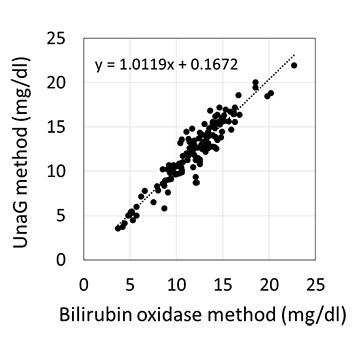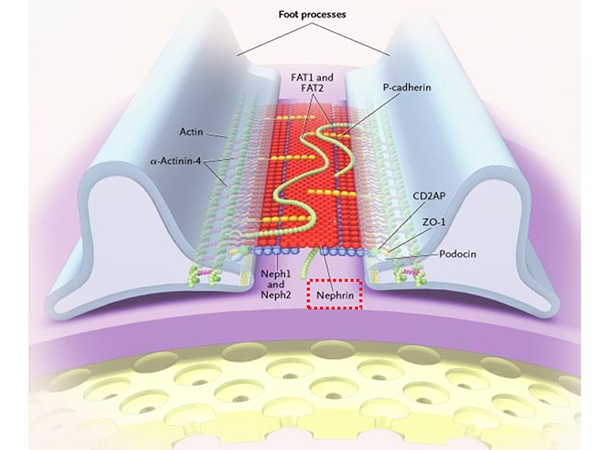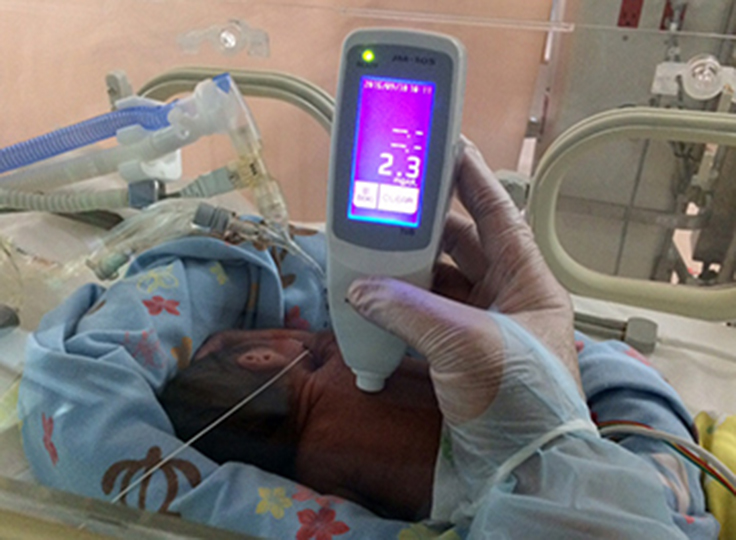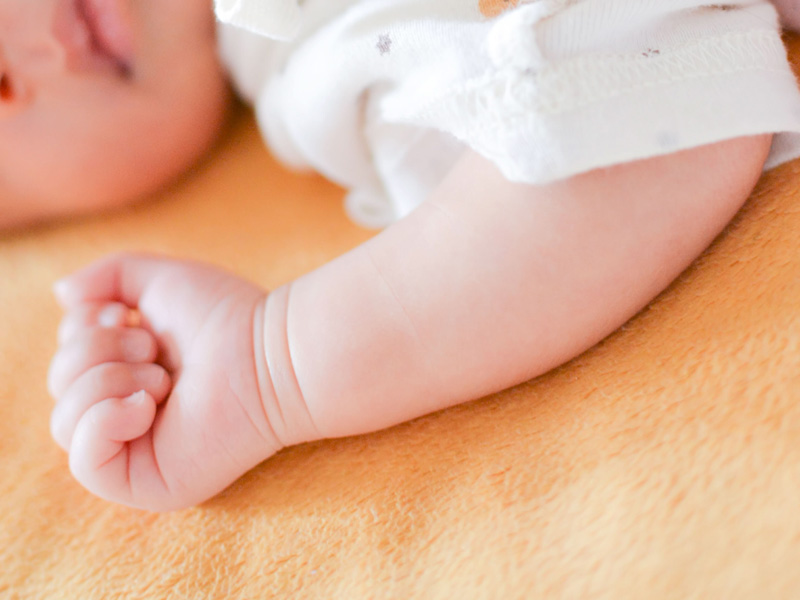A research group led by Project Professor MORIOKA Ichiro (Kobe University Graduate School of Medicine, Department of Pediatrics) and Assistant Professor IWATANI Sota (Kobe University Hospital, Center for Perinatal Care) in collaboration with Doctor MIYAWAKI Atsushi (team leader at the Brain Science Institute, RIKEN) have clinically proven that a fluorescent protein sourced from Japanese eel muscles can be used to accurately detect unconjugated bilirubin in newborns. This detection method is ideal for newborn patients who can only give limited blood samples, and could revolutionize ways of monitoring jaundice in newborn infants. The findings were published on June 21, 2016 in the online edition of Scientific Reports.


The mortality rate for newborn infants in Japan is the lowest in the world, at 0.9 in 1000 births, due to developments in medical management and technology in intensive care units. On the other hand, cases of kernicterus caused by bilirubin neurotoxicity in preterm newborn infants are increasing in Japan, which can lead to neurological handicaps such as cerebral palsy and loss of hearing. There is an urgent demand especially in Japan to improve bilirubin detection techniques for preterm infants.
Current conventional methods for measuring bilirubin in Japan are not unified. In addition, in current methods discrepant results have occurred caused by different methods. Most importantly, these current methods lead to inaccurate results due to interference by hemoglobin and lipids, which are often included in clinical serum samples of preterm or sickly newborn infants. Pediatricians, especially neonatologists, needed a highly sensitive method that could measure bilirubin without interference by hemoglobin and lipids based on small blood samples.
Project Professor Morioka’s team focused on UnaG, a fluorescent protein taken from the muscles of Japanese eels developed in 2013 by Dr. MIYAWAKI Atsushi. The UnaG method can directly measure the concentration of unconjugated bilirubin in the blood to a sensitivity of 10,000 times that of current conventional methods. The team carried out extensive experiments to confirm the accuracy of measuring unconjugated bilirubin using the UnaG method, and examine whether this result is affected by phototherapy, conjugated hyperbilirubinemia, hemolysis, or lipids.
After analyzing 140 serum samples from 92 newborns (including 35 samples from infants receiving phototherapy), the team recorded a highly positive correlation between the results measured using bilirubinoxidase (a current conventional method) and the UnaG method. The data was unaffected by phototherapy. They also confirmed that the UnaG method results were not affected by interference from conjugated bilirubin, hemoglobin, or lipids.
For these experiments, just one microliter of blood was used for a measurement of one sample. This is an innovative way of measuring bilirubin levels in newborn patients who can only give limited blood samples. Measuring bilirubin using this method could help to limit the neurological handicaps caused by bilirubin toxicity in preterm infants such as cerebral palsy and hearing loss. The team plans to develop a simpler analysis kit that can be used in clinical practice.
Journal information
- Title
- “Fluorescent protein-based detection of unconjugated bilirubin in newborn serum”
- DOI
- 10.1038/srep28489
- Authors
- Sota Iwatani(1), Hajime Nakamura(1), Daisuke Kurokawa(1), Keiji Yamana(1), Kosuke Nishida(1), Sachiyo Fukushima(1), Tsubasa Koda(1), Noriyuki Nishimura(1), Hisahide Nishio(2), Kazumoto Iijima(1), Atsushi Miyawaki(3), Ichiro Morioka(1)
- Department of Pediatrics, Kobe University Graduate School of Medicine
- Department of Epidemiology, Kobe University Graduate School of Medicine
- Brain Science Institute, RIKEN
- Journal
- Scientific Reports








